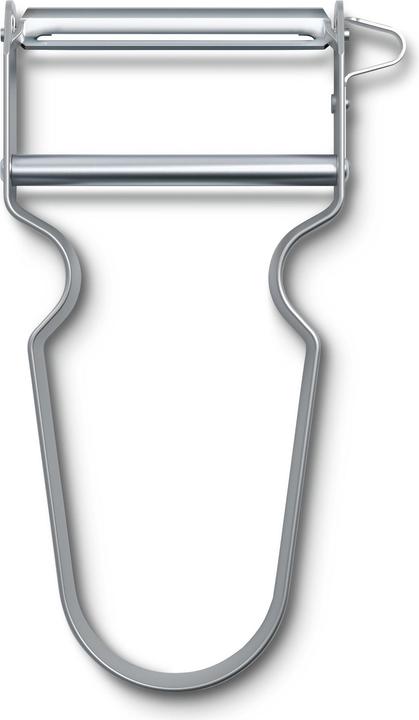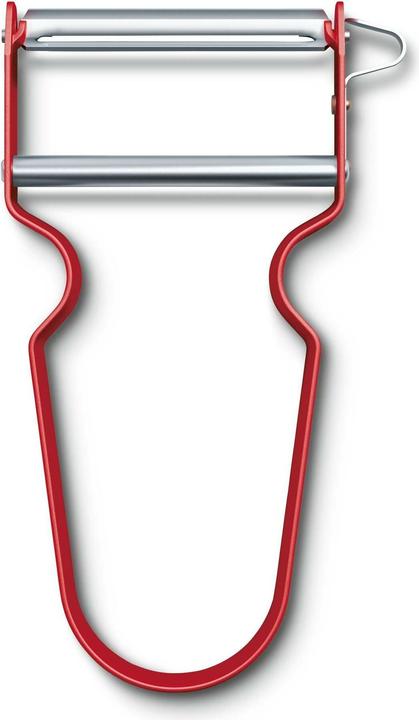

The peeler: "Who invented it?" A Swiss ... among other things
Velcro fastener, toilet duck or sack knife - the list of Swiss inventions is long. We also like to chalk up the peeler to a Swiss invention. Strictly speaking, this is only half the truth. But it is an extremely successful one.
Cucumber, carrots, apple, pear ... I'm once again preparing a snack box for our daughter. To get rid of the unwanted fruit and vegetable peelings, I reach for the peeler with somnambulistic certainty. One of those little helpers that have become indispensable in everyday life and in the kitchen. And a Swiss invention to boot. Isn't it?
The first name dropping
When asked about the origins of the peeler, the first place I turn to is Wikipedia. The corresponding article states that this term has existed since the end of the 19th century. The peeler is mentioned by name in a sample and model registration - the precursor to the patent application, so to speak - of a Viennese court peeler from 22 December 1891. So was the peeler invented in Austria?
In my search for proof of this, I actually find it in the Austrian National Library's digital archive for historical newspapers and magazines. In the "Amtsblatt zur Wiener Zeitung" of 17. [[strike:Jänner]]January 1892 the registration mentioned by Wikipedia is printed: A certain Joseph Denk is responsible for the term Sparschäler. Well thought out, Joseph!

Source: Screenshot Österreichische Nationalbibliothek
There don't seem to be any (more) pictures or drawings of the first peeler, at least I can't find any. However, in the years that followed, I came across newspaper adverts advertising the peeler, for example 1905 in the "Zürcher Oberländer" or in an issue of «Berner Tagwacht» von 1908. And in an advert in the "Oberländer Tagblatt" of 23 September 1918, it probably reads entirely in the spirit of the inventor:
«Economy peelers save a lot of time and money!»
This peeler is absolutely marvellous
Despite mentions in newspaper adverts, there didn't seem to be any real momentum in the peeler game. That changed in 1936. This is when the German Albert Deimel patented his Famos potato peeler. This was a peeler with a longitudinally mounted blade that could be moved.

Source: Wikimedia / Malchen53
The fact that Deimel's kitchen gadget became a successful and popular appliance is demonstrated by the fact that you can still buy the Famos peeler in its original form today.

The king from Switzerland
Despite the famous patent by Albert Deimel from Germany, it took a few more years before the peeler finally made its triumphant advance through international kitchen drawers. In 1947, the Swiss entrepreneur and inventor Alfred Neweczerzal had his model "Rex" - Latin for king - patented internationally, the first peeler with a transverse movable blade.

Source: Wikimedia Commons / Fred Klein
The "Rex" quickly becomes an indispensable little helper in the kitchen. For more than 70 years, Zena, the company founded by Neweczerzal in Affoltern am Albis, has produced tens of millions of peelers, of which around 60 per cent are exported to more than 20 countries. One thing is certain: the peeler itself was not originally invented in Switzerland. But the model that is known and used worldwide was.
In 2020, the family business was finally sold, but remained in Swiss hands: With Victorinox, the mother of the Swiss Army Knife also took over the production of the "Rex" peeler.
From the kitchen drawer to the stamp
What makes the "Rex" peeler so special? Anyone who has ever used it - and that's probably most people - will say similar things: it feels good and comfortable in the hand, it's light, peeling is quick ... And as if all that wasn't enough, it's also very stylish, not to mention iconic.
Its design, which has remained virtually unchanged since 1947, has also earned the "Rex" fame and honour outside the kitchen. It is revered as a classic of Swiss design and exhibited in museums. Swiss Post even dedicated a stamp to him in 2004.

Source: Shutterstock / Boris 15
The term "cult" should be used sparingly rather than excessively. For me, however, the "Rex" peeler fulfils all the conditions to be perceived and described as a cult object. I mean, hey, if not him, then who or what? Even if there are now peelers that do an even better job than the "Rex" ... Is that actually an insult to majesty?
I'm a full-blooded dad and husband, part-time nerd and chicken farmer, cat tamer and animal lover. I would like to know everything and yet I know nothing. I know even less, but I learn something new every day. What I am good at is dealing with words, spoken and written. And I get to prove that here.





